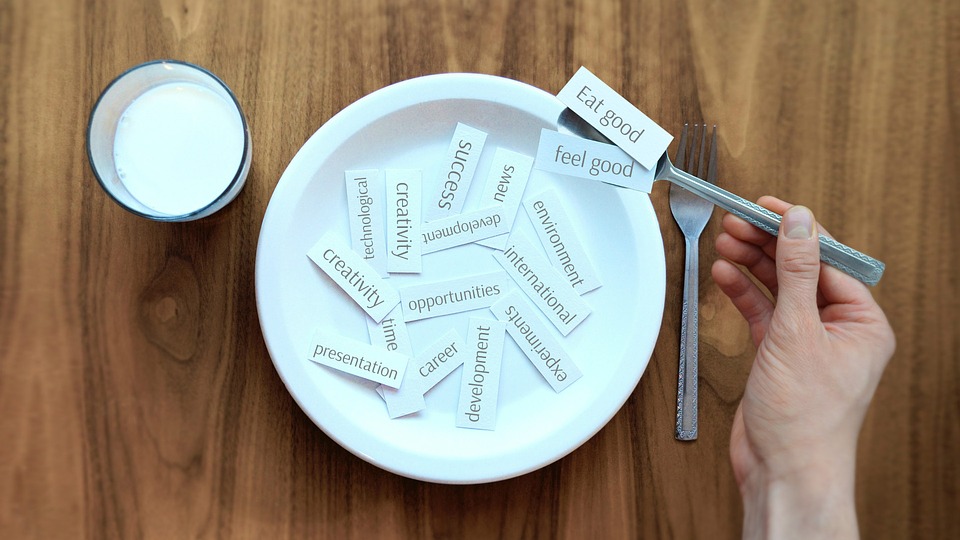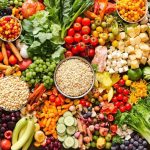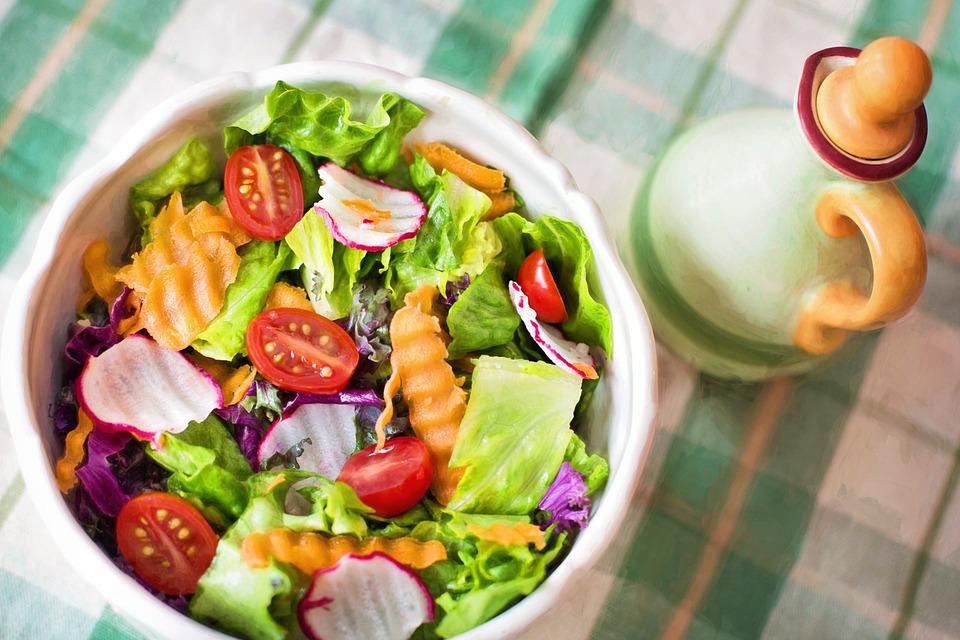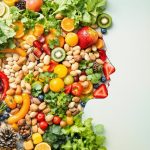
In our society, people are always on the go and barely have time to eat, let alone eat mindfully. Eating can feel like a chore, and for most people, eating mindfully just means remembering to eat.
This guide is for anyone who wants to improve their eating habits, eat less, and enjoy their food more without feeling guilty or restricted.
Processed and highly palatable foods make mindful eating a challenge
Processed foods are often missed as one of the causes of our inability to eat mindfully.
The foods mentioned are easy to chew and digest, and people often overeat them. Many people think they are entirely to blame for overeating, when in reality our bodies have been conditioned to eat and behave in a certain way over many years.
Agricultural and societal evolution have occurred so quickly that we have not been able to adapt to the resulting changes in our diets. Our bodies have not had time to adjust to processed foods that are high in calories, fat, sugar, and other ingredients.
David Kessler, MD, author of “The End of Overeating: Taking Control of the Insatiable American Appetite” said that the food industry produces processed foods that are high in sugar, fat, and salt to make people eat more than they need to. Dr. Kessler believes that we need to develop new skills to overcome the temptation of these “highly palatable” processed foods. One solution is to eat mindfully.
What else drives “mindless” eating?
Are there any other factors causing people to eat mindlessly other than daily hectic demands, new traditions, and processed foods?
There are many other factors that can contribute to a person’s compulsive eating habits.
Five of the most common factors driving “mindless” compulsive eating include:
- Chronic Stress
- Inattentiveness
- Your Brain’s Hard-wiring and Willpower
- Satiety Signals
- Eating Reward System
The five factors mentioned are likely the cause of your overeating, eating the wrong foods, or not enjoying your food and meals.
Mindful eating is an excellent remedy for each factor.
Chronic stress
All forms of stress drain the body’s resources.
Whenever you get stressed, your body goes out of balance. In response, your brain tells you to eat in order to replenish your resources and achieve balance once again.
Inattentiveness
In this era of constant demands, you often have no choice but to focus on more than one thing at a time.
Life moves quickly and is in your face all the time.
Its common for us to try to do multiple things at the same time. We assume that this is the only way to get everything done. So we try to accomplish two things with one action.
We attempt to eat while:
- Texting
- Talking on the phone
- Driving
- Reading
- And many other tasks
But, here’s the problem.
If you give your attention to something else while you are eating, you will eat more than if you were paying attention to your food.
The results are your consumption of excess calories.
The satiety center in your brain doesn’t register that you’ve had enough to eat, so you keep eating even when your body doesn’t need the food.
Your brain versus willpower
Your brain is hardwired for your survival.
At least, that’s according to new research out of Boston University that suggests your brain needs more energy than previously thought. It’s okay to eat too much, according to new research.
Your brain is easily pleasured by foods that stimulate its pleasure center and trigger a release of dopamine. This makes sure that you really enjoy eating.
Sugar, fat, and salt deliver pleasure to your brain in a way that few other foods can.
If you regularly eat foods that are high in certain key ingredients, your brain will start to crave them more and more. This is because consuming these foods increases the level of dopamine in your brain, in the same way that drugs like methamphetamines, amphetamines, and cocaine do. It’s important to realize that the way food can affect you is just as powerful as some drugs.
Food manufacturers and food scientists have long understood the power that sugar, fat and salt have over the human brain. They also know that individuals have very little willpower to resist these foods, which are more enticing and tempting than anything else.
To make it harder for you to stick to your diets, delicious foods that produce dopamine are available on almost every street corner. You can find gas stations, convenience stores, and fast-food restaurants that provide you with food that is quick and tastes great, but is also loaded with sugar, fat, and salt.
There’s no denying that temptation is everywhere you look. It’s hard to resist when there’s food loaded with sugar, fat, and salt at every turn.
Satiety signals
It typically takes around 20-30 minutes for your brain to get the message from your stomach that you’re no longer hungry or full.
The average person wolfs down snacks and fast food meals in a matter of 5 to 10 minutes. In these cases, the brain never has the opportunity to get the signal from your stomach that you’re full.
The ADA conducted a study involving 30 healthy women to determine if there was a difference in calorie consumption and satiety based on how quickly the women ate their meals. The findings, published in 2008, showed that the women who ate slowly consumed fewer calories, drank more water, and felt full quickly.
For obese individuals, the body may be less responsive to satiety signals from the hormone leptin. Additionally, environmental cues (smell, sight, etc.) may also send confusing signals to the brain saying “eat now”.
Although it may take more time, enjoying each bite of your meal will allow your brain to better register when you are full and stop eating. shoveling food in without savoring it will cause you to eat more than you need before your brain gets the message to stop.
The eating reward system
Many people are unaware that your body rewards you for listening to its commands to eat.
After eating, you may experience a calm, “good” feeling. This is your brain’s way of rewarding you with a small endorphin rush.
This text is saying that eating improves a person’s mood, and is therefore a common response to negative emotions or stress. It also says that while eating is not a healthy way to relieve stress, it is nevertheless very effective.
In other words, your willpower cannot compete with your body’s natural desire to survive.
However, mindful eating allows you to:
- Control your eating even while under chronic stress
- Focus on your meal
- Consume fewer calories
- Work with your brain’s hard-wiring instead of against it
- Benefit from your body’s satiety signals
- Avoid being a slave to your body’s “eating reward system”
What are the benefits of mindful eating and why is it important?
Most people are unaware that it is possible to have a healthy and enjoyable relationship with food.
Instead of eating for nourishment, millions of people now eat to kill the pain of some other problem or discomfort, including:
- Boredom
- Loneliness
- Sadness
- Stress
- Exhaustion
You can improve your relationship with food by being aware of your body’s hunger and fullness signals, and paying attention to the taste, texture, and energy effects of the food you eat. Mindful eating can help you make healthier choices, eat less food, and improve your digestion. It can also help you break unhealthy eating habits.
How to practice mindful eating
To be mindful, you need to be aware of what you’re doing in the present moment. With mindful eating, that means paying attention to your food and the experience of cooking, serving, and eating, instead of being on “automatic pilot” or distracted by other things. If your attention starts to wander, gently bring it back to your food.
Practicing mindful eating for brief periods of time and gradually increasing the duration is one way to start. It is also possible to be mindful while grocery shopping or reading a restaurant menu. Carefully consider items such as calories, fat, sodium, and fiber content when making choices.
- Start by taking a few deep breaths and considering the health value of each different piece of food. While nutrition experts continually debate exactly which foods are “healthy” and which are not, the best rule of thumb is to eat food that is as close as possible to the way nature made it.
- Employ all your senses while you’re shopping, cooking, serving, and eating your food. How do different foods look, smell, and feel as you chop? How do they sound as they’re being cooked? How do they taste as you eat?
- Be curious and make observations about yourself, as well as the food you’re about to eat. Notice how you’re sitting, sit with good posture but remain relaxed. Acknowledge your surroundings but learn to tune them out. Focusing on what’s going on around you can distract you from the process of eating and take away from the mindfulness experience.
- Tune into your hunger. How hungry are you? You want to come to the table when you’re hungry, but not ravenous after skipping meals. Know what your intentions are in eating this specific meal. Are you eating because you’re actually hungry or is it that you’re bored, need a distraction, or think it’s what you should be doing?
- With the food in front of you, take a moment to appreciate it—and any people you’re sharing the meal with—before eating. Pay attention to the textures, shapes, colors, and smells of the food. What reactions do you have to the food, and how do the smells make you feel?
- Take a bite, and notice how it feels in your mouth. How would you describe the texture now? Try to identify all the ingredients and all the different flavors. Chew thoroughly and notice how you chew and what that feels like.
- Focus on how your experience shifts moment to moment. Do you feel yourself getting full? Are you satisfied? Take your time, stay present, and don’t rush the experience.
- Put your utensils down between bites. Take time to consider how you feel—hungry, satiated—before picking up your utensils again. Listen to your stomach, not your plate. Know when you’re full and stop eating.
- Give gratitude and reflect on where this food came from, the plants or animals involved, and all the people it took to transport the food and bring it onto your plate. Being more mindful of the origins of our food can help us all make wiser and more sustainable choices.
- Continue to eat slowly as you talk with your dining companions, paying close attention to your body’s signals of fullness. If eating alone, try to stay present to the experience of consuming the food.
How to fit mindful eating into your life. A real-world example:
It will be very difficult to eat every meal slowly, mindfully, and without distraction.
Sometimes the dog makes a mess, causing you to be late for work. Drinking a cup of coffee and eating a bagel is the best you’re going to be able to do.
Your kids might need your help with their school work, which could mean that the two of you have to eat dinner while you’re also dealing with reading, writing, and arithmetic.
And sometimes mindlessly eating ice cream while watching a movie is the perfect remedy.
All of this is OK.
If you want to practice mindful eating, try to do it 80-90% of the time. It can help you reach your dieting goals.
An example of a day of mindful eating for me would be as follows. This occurs for about 80% of the time. The other 20% of the time is complete chaos.
WAKE UP
- Feed the dogs
- Move my body with a 5-minute movement routine
- Take a cold shower (or skip it)
- Check in with how much hunger I have. If I’m hungry I eat one of three breakfasts I repeat over and over again. If I’m not, I skip it and carry on with my day.
LUNCH
I rate my hunger level on a scale from 1 to 10, and if I’m feeling hungry, I’ll take a break from work to make one of three lunches that I eat frequently (a meal with fruit, veggies, lean protein, and olive oil).
I find that using chopsticks forces me to eat more slowly, without having to put any extra thought or effort into it.
I take the dogs for a walk after eating to help my food digest and to stop myself from snacking on chocolate.
DINNER
The process is similar to what was described earlier. If I am eating in a restaurant or with other people, I try to put my utensils down between bites and carry on a conversation. I usually drink water or sip wine between bites.
If I find myself snacking more often than usual, I try to check in with myself and see if I’m actually hungry or if there’s something else going on. H-A-L-T-B stands for hungry, angry, lonely, tired, bored.
Reflect on whether you really need to eat in the car. Can you wait for 30 minutes until you get home? Sure, you may feel hungry, but hunger isn’t an emergency—it’s only uncomfortable.
You can create more awareness by doing subtle things like this.














